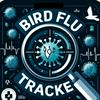404 episodes

Alarming Pandemic Risk: H5N5 Avian Flu Surges, Experts Warn of Potential 2026 Outbreak
08/1/2026 | 2 mins.
U.S. and global health officials are intensifying surveillance of bird flu as scientists warn 2026 could bring a higher risk of a human pandemic if the virus keeps evolving in animals.In the United States, the Washington State Department of Health yesterday issued updated clinical guidance after confirming in November 2025 the nation’s first known human case of H5N5 avian influenza, a severe infection that resulted in death. The department stresses that overall risk to the general public remains low, but urges clinicians to ask flu patients about recent contact with sick birds, poultry, livestock, or raw milk and to test and isolate suspected cases quickly.The Centers for Disease Control and Prevention continues to report that current public health risk from bird flu is low, yet officials are closely watching dairy and poultry operations after the virus became established in U.S. dairy cattle in recent years. According to reporting from the Los Angeles Times, California alone has accounted for more than half of the country’s confirmed human bird flu infections since 2021, largely among dairy and poultry workers with prolonged exposure to infected animals.Globally, scientists interviewed by Science Focus warn that highly pathogenic H5N1 has infected hundreds of millions of farmed birds, spread widely in wild bird populations, and spilled over into a growing list of mammals. One virologist described the disease in wild animals as “completely out of control” and said there is no realistic way to contain it other than monitoring its spread. Experts caution that while human cases are still rare, every new animal outbreak is another opportunity for the virus to mutate in ways that might make sustained human-to-human transmission possible.For now, health authorities in the U.S. and abroad are emphasizing basic precautions: avoid handling sick or dead birds, report unusual wildlife die-offs, and for farm and dairy workers, use protective gear and follow biosecurity rules. Seasonal flu vaccination is also being encouraged to reduce the risk of people being co-infected with both seasonal and avian influenza, a combination that could help the virus adapt more easily to humans.Thank you for tuning in, and come back next week for more. This has been a Quiet Please production, and for more from me check out QuietPlease dot A I.For more http://www.quietplease.aiGet the best deals https://amzn.to/3ODvOtaThis content was created in partnership and with the help of Artificial Intelligence AI

Urgent Plea for USDA to Fast-Track Bird Flu Vaccine Amid Devastating Poultry Losses
06/1/2026 | 1 mins.
.S. senators are ramping up pressure on the USDA to fast-track a science-based bird flu vaccination plan for poultry amid ongoing outbreaks that have killed over 180 million birds since 2022. Vet Candy reports that a bipartisan group of 23 senators sent a letter this week to Agriculture Secretary Brooke Rollins, demanding urgency as infections surge in winter months driven by wild bird migration and farm vulnerabilities.The plea highlights frustrations with biosecurity alone, which USDA officials call the primary defense but veterinarians say falls short. Despite a June confirmation of vaccine development and 400 research proposals from a 100 million dollar federal fund for egg-laying hens, no timelines or decisions have emerged. Frontline vets face uncertainty, advising producers on depopulation while trade concerns loom, as many countries ban imports from vaccinated flocks.Politics add tension: the Trump administration axed a 700 million dollar Moderna human bird flu vaccine contract, and Health Secretary Robert F. Kennedy Jr. has slashed other vaccine funding, stirring worries in animal health circles despite distinctions between human and poultry shots.Globally, bird flu persists, but U.S. focus sharpens on poultry losses threatening egg and meat supplies. The CDC's latest flu report for week 52, ending December 27 and released January 5, notes elevated seasonal influenza but no fresh H5N1 human cases in the past day.No major human infections or new outbreaks reported in the last 24 hours, keeping the virus primarily an animal crisis.Thank you for tuning in. Come back next week for more. This has been a Quiet Please production, and for me, check out Quiet Please Dot A I.For more http://www.quietplease.aiGet the best deals https://amzn.to/3ODvOtaThis content was created in partnership and with the help of Artificial Intelligence AI

H5N1 Bird Flu Outbreak Continues Nationwide, Impacting Dairy Cows, Poultry, and Wild Birds
03/1/2026 | 2 mins.
H5N1 bird flu continues to circulate widely in the United States, with GISAID reporting ongoing spread in dairy cows, poultry, and wild birds as of January 1, driven by the clade 2.3.4.4b strain. The California Department of Food and Agriculture announced on December 31 that four dairy herds remain under quarantine, including one re-quarantined after a new detection on a previously cleared site, amid 766 total infected dairies since 2024.In human cases, the CDC has confirmed 71 infections nationwide, mostly mild eye and respiratory symptoms among farm workers exposed to infected animals, according to GISAID data through December 30. California leads with 38 cases linked to dairy cows, while 41 total tie to cows and 24 to poultry. No person-to-person transmission is reported, though one mammalian adaptation marker appeared in a single worker.A notable development: Washington State Department of Health reported a hospitalized resident in Grays County—the first human case of a rare influenza A H5 strain never before seen in people—linked to backyard poultry exposed to wild birds. The patient, with underlying conditions, remains hospitalized since early November, but no related infections have surfaced.Globally, the virus persists unpredictably, with high RNA levels in raw milk and infections across mammals like cats and coyotes. Vets are pushing back against USDA's ventilation shutdown depopulation methods for poultry flocks, per My Vet Candy on January 2. CIDRAP noted a fresh avian flu case in Nebraska yesterday.Public risk stays low, per CDC, but experts urge vigilance during migratory bird season. Thank you for tuning in. Come back next week for more. This has been a Quiet Please production. For me, check out Quiet Please Dot A I.For more http://www.quietplease.aiGet the best deals https://amzn.to/3ODvOtaThis content was created in partnership and with the help of Artificial Intelligence AI

Bird Flu Persists in US Poultry, Impacting Prices and Flocks
01/1/2026 | 2 mins.
Bird flu continues to challenge US poultry farmers as 2026 begins, with ongoing recoveries from massive flock losses and warnings of persistent risks. In Ohio, farmers are still rebuilding after highly pathogenic avian influenza wiped out over 15 million birds starting Christmas Eve 2024, according to Ohio Department of Agriculture Director Brian Baldridge. Ohio Poultry Association executive vice president Jim Chakeres notes flocks aren't fully restocked due to two-year scheduling delays, amid nationwide losses nearing 175 million birds since 2022 that have driven up egg and poultry prices.No new commercial cases reported in Ohio recently, but wild birds carry the virus, including 72 vultures that died last month in Clermont County from preliminary lab tests. Iowa recorded ten avian flu cases in 2025, killing over 758,000 birds, per KGAN reports. As of early November, USDA data showed 67 flocks affected nationwide in 30 days, leading to 3.72 million bird deaths.Human risk stays low, with at least 70 US infections mostly among farmworkers and one death, says UNMC Health Security. Indian researchers from Ashoka University warn in BMC Public Health of potential H5N1 human spread, urging better surveillance after 990 global cases since 2003 with 48 percent fatality.Vaccination remains off-limits for US flocks due to USDA trade concerns, despite a 100 million dollar study underway. Biosecurity is at peak levels, limiting farm access.Grant County Health in Washington distinguishes bird flu from seasonal flu surging there, with no person-to-person bird flu transmission.Thank you for tuning in. Come back next week for more. This has been a Quiet Please production, and for me check out Quiet Please Dot A I.For more http://www.quietplease.aiGet the best deals https://amzn.to/3ODvOtaThis content was created in partnership and with the help of Artificial Intelligence AI

Soaring Concerns: Latest Outbreaks and Human Impacts of Avian Influenza Across the U.S.
30/12/2025 | 2 mins.
# Bird Flu UpdateBird flu continues to spread across the United States, with new outbreaks emerging in multiple states and concerns growing among public health officials.According to the Center for Infectious Disease Research and Policy, new avian flu outbreaks have been reported in five states as of December 11th. In Indiana, the situation has escalated significantly, with outbreaks at commercial duck meat facilities affecting more than 15,000 birds.The human impact remains limited but serious. Washington Department of Health confirmed the first known human case of H5N5 avian influenza in November of this year. The patient was hospitalized with severe disease and unfortunately died, marking a significant development in the outbreak. Symptoms of avian influenza in humans can range from mild to severe and mirror those of seasonal influenza.Meanwhile, wildlife authorities are investigating suspected bird flu deaths in Florida. Officials suspect bird flu after 12 swans died recently at Lake Eolas Park in downtown Orlando. About five dozen swans lived at the park before these recent deaths. The last bird flu outbreak at the park occurred in February 2024. Because the deaths occurred during the holiday season, the citys specialized veterinarians were unable to perform immediate evaluations. Dead swans have been stored securely for necropsies to determine the cause of death.According to the CDC and Washington Department of Health, the risk of avian influenza to the general public remains low, though officials are closely monitoring the situation. Transmission between humans is extremely rare and has not been documented in the United States. The greatest risk to the general public continues to be seasonal influenza.Health officials recommend that people avoid handling sick or dead birds or wildlife. Healthcare workers are advised to treat suspected avian influenza patients immediately with antiviral medications and to use strict isolation and personal protective equipment protocols.The seasonal influenza vaccine is recommended for everyone six months and older. While the seasonal vaccine does not protect against avian influenza, it reduces the risk of co-infections, which public health officials consider an important concern.Thanks for tuning in to this bird flu update. Be sure to check back next week for more health and science news. This has been a Quiet Please production. For more information, check out Quiet Please Dot A I.For more http://www.quietplease.aiGet the best deals https://amzn.to/3ODvOtaThis content was created in partnership and with the help of Artificial Intelligence AI
More Health & Wellness podcasts
Trending Health & Wellness podcasts
About Bird Flu Tracker Avian Influenza A H5N1
Listen to Bird Flu Tracker Avian Influenza A H5N1, Happy Place and many other podcasts from around the world with the radio.net app
Get the free radio.net app
- Stations and podcasts to bookmark
- Stream via Wi-Fi or Bluetooth
- Supports Carplay & Android Auto
- Many other app features
Get the free radio.net app
- Stations and podcasts to bookmark
- Stream via Wi-Fi or Bluetooth
- Supports Carplay & Android Auto
- Many other app features

Bird Flu Tracker Avian Influenza A H5N1
download the app,
start listening.





































